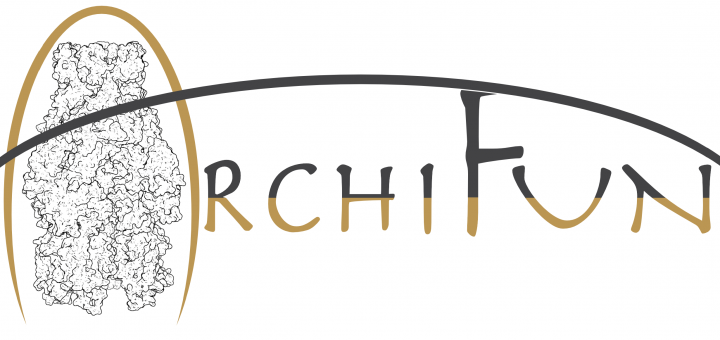Introduction
L’équipe Biophysique des systèmes complexes (BIOSYS) s’intéresse à la caractérisation structurale et dynamique de protéines et d’assemblages protéiques complexes impliqués dans des processus biologiques. Elle développe aussi des approches fondamentales combinant les données biophysiques avec des simulations de dynamique moléculaire par GPU.
Axes de recherche
Actuellement, l’équipe développe 4 thématiques de recherche :
- résistance bactérienne à l’argent
- développement d’outil de diagnostic de la schistosomiase
- développement d’inhibiteurs peptidiques spécifiques au complexe AuroraA/N-Myc impliqué dans le neuroblastome
- prédiction des données de relaxation RMN par dynamique moléculaire (GPU)
Projets de recherche
Dans le cadre de nos projets de recherche, nous développons des outils méthodologiques pour répondre aux questions biologiques telles que la résistance bactérienne à l’argent, le développement d’outil de diagnostic précoce de la schistosomiase ou la recherche d’inhibiteur du complexe AuroraA/N-Myc impliqué dans le neuroblastome . Pour cela, nous utilisons différentes techniques biophysiques telles que la résonance magnétique nucléaire (RMN), la diffusion des neutrons et des rayons-X aux petits angles (SANS, SAXS), la cristallographie aux rayons-X, le dichroïsme circulaire (CD), la diffusion dynamique de la lumière (DLS) et la spectroscopie IR. Nous combinons également les données biophysiques avec un calcul haute performance basé sur l’utilisation de matériel GPU et des méthodes de dynamique moléculaire / calculs d’énergie libre.
Partenariats
L’équipe collabore avec d’autres partenaires académiques :
- Equipe Spectrobio à l’Institut Lumière Matière (ILM) dans le cadre du projet resistance bactérienne
- Equipes Spectrobio (ILM) et Micro et nanobiotechnologie dans le cadre du projet schistosomiase (projet MITI CNRS)
- Prof Paiardini (Biochemical sciences, Sapienza University of Roma) dans le cadre du projet neuroblastome
Prof Adriana Miele est présidente de l’association ARBRE (Association of Resources for Biophysical Research in Europe) don’t l’équipe fait partie .
Prof Adriana Miele est porteur du projet Horizon-MSCA-2022-COFUND ArchiFun (2024-2029), programme doctoral impliquant les universités : UCBL Lyon 1, Université de Grenade, Université de Padoue, Université technologique de Munich, Université de Vilnius et l’institut national de Chimie de Ljubljana.
Capacités expérimentales et instrumentales
L’équipe dispose d’un laboratoire de biochimie dédié à la préparation et purification des échantillons biologiques marquées (15N, 13C, 2H) ou non. Le laboratoire est donc équipé de 2 incubateurs, d’un stérilisateur, de plusieurs centrifugeuses, de 2 systèmes de purification AKTA (colonnes d’affinité, d’exclusion stérique), d’un sonicateur et d’un -80°C pour stocker les échantillons. Plusieurs techniques biophysiques sont à disposition de l’équipe : dichroïsme circulaire (CD), diffusion dynamique de la lumière (DLS) et plateforme IR/Raman (contact: M.Martin ici spectroscopie vibrationnelle). L’équipe possède aussi 3 spectromètres RMN : 400 MHz Bruker avec sonde BBFO, 600 MHz Varian avec une cryosonde HCN refroidie à l’hélium et 600 MHz Bruker avec une cryosonde HCN refroidie à l’azote. Ces équipements sont accessibles pour les autres laboratoires académiques ou pour les industriels (contact Mme Sanglar ici RMN).Enfin, pour réaliser des études de modélisation, plusieurs calculateurs équipés de cartes GPU sont disponibles.
Personnels
Chercheurs et enseignants-chercheurs
Soutien à la recherche
Publications (sources HAL)
Articles dans une revue
- Maggy Hologne, Po-Chia Chen, François-Xavier Cantrelle, Olivier Walker. Molecular dynamics as an efficient process to predict 15 N chemical shift anisotropy at very high NMR magnetic fields. Physical Chemistry Chemical Physics, 2025, ?10.1039/D4CP03821E?. ?hal-04882570?
- Valentina Andretto, Annalisa Rosso, Serena Zilio, Jacqueline Sidi-Boumedine, Gilles Boschetti, et al.. Peptide‐Based Hydrogel for Nanosystems Encapsulation: the Next Generation of Localized Delivery Systems for the Treatment of Intestinal Inflammations. Advanced Healthcare Materials, 2024, 13 (16), ?10.1002/adhm.202303280?. ?hal-04958609?
- Clémence Gély, Yoan Monneau, Maggy Hologne, Karine Faure. Impact of conditioning runs on hydrophilic interaction chromatography repeatability and its application as a second dimension in online comprehensive two-dimensional liquid chromatography. Journal of Separation Science, 2024, 47, ?10.1002/jssc.202300935?. ?hal-04590635?
- Nazha Hilali, Waralee Ruankham, Isaac Aarón Morales Frías, Francesca Bellagambi, Marie Hangouët, et al.. Copper-free click chemistry assisted antibodies for immunodetection of interleukin-10 in saliva. Microchemical Journal, 2023, 193, pp.108933. ?10.1016/j.microc.2023.108933?. ?hal-04953776?
- Anis Madaci, Patcharapan Suwannin, Guy Raffin, Marie Hangouet, Marie Martin, et al.. A Sensitive Micro Conductometric Ethanol Sensor Based on an Alcohol Dehydrogenase-Gold Nanoparticle Chitosan Composite. Nanomaterials, 2023, 13 (16), pp.2316. ?10.3390/nano13162316?. ?hal-04204911?
- Stepanka Nedvedova, Florence Guillière, Adriana Erica Miele, François-Xavier Cantrelle, Jan Dvorak, et al.. Divide, conquer and reconstruct: How to solve the 3D structure of recalcitrant Micro-Exon Gene (MEG) protein from Schistosoma mansoni. PLoS ONE, 2023, 18 (8), pp.e0289444. ?10.1371/journal.pone.0289444?. ?hal-04177131?
- Zoé Daverio, Maxime Kolkman, Johan Perrier, Lexane Brunet, Nadia Bendridi, et al.. Warburg-associated acidification represses lactic fermentation independently of lactate, contribution from real-time NMR on cell-free systems. Scientific Reports, 2023, 13 (1), pp.17733. ?10.1038/s41598-023-44783-3?. ?hal-04597981?
- Štěpánka Nedvědová, Davide de Stefano, Olivier Walker, Maggy Hologne, Adriana Erica Miele. Revisiting Schistosoma mansoni Micro-Exon Gene (MEG) Protein Family: A Tour into Conserved Motifs and Annotation. Biomolecules, 2023, 13 (9), pp.1275. ?10.3390/biom13091275?. ?hal-04189192?
- Cyrielle Arrault, Yoan Rocky Monneau, Marie Martin, François-Xavier Cantrelle, Emmanuelle Boll, et al.. The battle for silver binding: How the interplay between the SilE, SilF, and SilB proteins contributes to the silver efflux pump mechanism. Journal of Biological Chemistry, 2023, 299 (8), pp.105004. ?10.1016/j.jbc.2023.105004?. ?hal-04172931?
- Mauro Giorgi, Adriana Erica Miele, Silvia Cardarelli, Alessandra Giorgi, Mara Massimi, et al.. Structural Characterization of Murine Phosphodiesterase 5 Isoforms and Involvement of Cysteine Residues in Supramolecular Assembly. International Journal of Molecular Sciences, 2023, 24 (2), pp.1108. ?10.3390/ijms24021108?. ?hal-03989112?
- Yoan Monneau, Cyrielle Arrault, Coraline Duroux, Marie Martin, Fabien Chirot, et al.. Structural and dynamical insights into SilE silver binding from combined analytical probes. Physical Chemistry Chemical Physics, 2023, 25 (4), pp.3061-3071. ?10.1039/D2CP04206A?. ?hal-03960103?
- Ibrahim Musa, Guy Raffin, Marie Hangouet, Marie Martin, Joan Bausells, et al.. Electrospun PVC-nickel phthalocyanine composite nanofiber based conductometric methanol microsensor. Microchemical Journal, 2022, 182, pp.107899. ?10.1016/j.microc.2022.107899?. ?hal-03997245?
- Julien Terrasse, Marie Martin, Sarah Dubail, Patrice Dole, Hervé Casabianca. Non-targeted screening of extracts from polyester-phenolic can coatings: Identification of new aldehyde molecules from resole-based resins. Talanta, 2022, 243, pp.123351. ?10.1016/j.talanta.2022.123351?. ?hal-03648101?
- Pouyan Razmshoar, S.H. Bahrami, Mohammad Rabiee, Marie Hangouet, Marie Martin, et al.. A novel electrochemical immunosensor for ultrasensitive detection of tumor necrosis factor α based on polystyrene -PAMAM dendritic polymer blend nanofibers. Microchemical Journal, 2022, 175, pp.107206. ?10.1016/j.microc.2022.107206?. ?hal-03997116?
- Rania Mechichi, Taha Chabbah, Saber Chatti, Ibtissem Jlalia, Corinne Sanglar, et al.. Semi-interpenetrating Network-Coated Silica Gel Based on Green Resources for the Efficient Adsorption of Aromatic Pollutants from Waters. Chemistry Africa, In press, ?10.1007/s42250-022-00463-9?. ?hal-03772893?
- Silvia Cardarelli, Adriana Erica Miele, Federica Campolo, Mara Massimi, Patrizia Mancini, et al.. Cellular Redox Metabolism Is Modulated by the Distinct Localization of Cyclic Nucleotide Phosphodiesterase 5A Isoforms. International Journal of Molecular Sciences, 2022, 23 (15), pp.8587. ?10.3390/ijms23158587?. ?hal-04004278?
- Tingting Niu, Charlotte de Rosny, Séverine Chautard, Amaury Rey, Danish Patoli, et al.. NLRP3 phosphorylation in its LRR domain critically regulates inflammasome assembly. Nature Communications, 2021, 12 (1), pp.Article number: 5862. ?10.1038/s41467-021-26142-w?. ?hal-03401509?
- Hassen Touzi, Yves Chevalier, Marie Martin, Hafedh Ben Ouada, Nicole Jaffrezic-Renault. Detection of Gadolinium with an Impedimetric Platform Based on Gold Electrodes Functionalized by 2-Methylpyridine-Substituted Cyclam. Sensors, 2021, 21 (5), pp.1658. ?10.3390/s21051658?. ?hal-03318450?
- Frank Gondelaud, Mathilde Bouakil, Aurélien Le Fèvre, Adriana E. Miele, Fabien Chirot, et al.. Extended disorder at the cell surface: The conformational landscape of the ectodomains of syndecans. Matrix Biology Plus, 2021, 12, pp.100081. ?10.1016/j.mbplus.2021.100081?. ?hal-04998857?
- Frank Gondelaud, Mathilde Bouakil, Aurélien Le Fèvre, Adriana Erica Miele, Fabien Chirot, et al.. Extended disorder at the cell surface: The conformational landscape of the ectodomains of syndecans. Matrix Biology Plus, 2021, 12 (3-4), pp.100081. ?10.1016/j.mbplus.2021.100081?. ?hal-04004263?
- Lucille Babel, Minh-Ha Nguyen, Cédric Mittelheisser, Marie Martin, Katharina Fromm, et al.. NMR reveals the interplay between SilE and SilB model peptides in the context of silver resistance. Chemical Communications, 2021, 57, pp.8726-8729. ?10.1039/d1cc02597j?. ?hal-03324047?
- Moreno Marcellini, Minh-Ha Nguyen, Marie Martin, Maggy Hologne, Olivier Walker. Accurate Prediction of Protein NMR Spin Relaxation by Means of Polarizable Force Fields. Application to Strongly Anisotropic Rotational Diffusion. Journal of Physical Chemistry B, 2020, 124 (25), pp.5103-5112. ?10.1021/acs.jpcb.0c01922?. ?hal-03968000?
- Sophie Salle, Sandra Bodeau, Alice Dhersin, Mathilde Ferdonnet, Ruben Goncalves, et al.. Novel synthetic opioids: A review of the literature. Toxicologie Analytique et Clinique, 2019, 31 (4), pp.298-316. ?10.1016/j.toxac.2019.10.001?. ?hal-03831193?
- Charline Bottinelli, Maggy Hologne, Kévin Revelut, Yvan Gaillard, Fabien Bévalot. GC-MS, GC-QTOF and NMR analyses to elucidate composition of 41 powders from an NPS collector. Toxicologie Analytique et Clinique, 2019, 31 (4), pp.275-282. ?10.1016/j.toxac.2019.10.002?. ?hal-02437094?
- Minh-Ha Nguyen, Marie Martin, Henry Kim, Frank Gabel, Olivier Walker, et al.. Molecular recognition of ubiquitin and Lys63-linked diubiquitin by STAM2 UIM-SH3 dual domain: the effect of its linker length and flexibility. Scientific Reports, 2019, 9 (1), pp.14645. ?10.1038/s41598-019-51182-0?. ?hal-03968013?
- Minh-Ha Nguyen, Marie Martin, Henry Kim, Frank Gabel, Olivier Walker, et al.. Molecular recognition of ubiquitin and Lys63-linked diubiquitin by STAM2 UIM-SH3 dual domain: the effect of its linker length and flexibility. Scientific Reports, 2019, 9 (1), ?10.1038/s41598-019-51182-0?. ?hal-02441244?
- Louis-Marie Bloyet, Antoine Schramm, Carine Lazert, Bertrand Raynal, Maggy Hologne, et al.. Regulation of measles virus gene expression by P protein coiled-coil properties. Science Advances , 2019, 5 (5), pp.eaaw3702. ?10.1126/sciadv.aaw3702?. ?hal-02133726?
- Po-Chia Chen, Maggy Hologne, Olivier Walker, Janosch Hennig. Ab Initio Prediction of NMR Spin Relaxation Parameters from Molecular Dynamics Simulations. Journal of Chemical Theory and Computation, 2018, 14 (2), pp.1009 - 1019. ?10.1021/acs.jctc.7b00750?. ?hal-01767727?
- Valentin Chabert, Maggy Hologne, Olivier Sénèque, Olivier Walker, Katharina Fromm. Alpha-helical folding of SilE models upon Ag(His)(Met) motif formation. Chemical Communications, 2018, 54 (74), pp.10419 - 10422. ?10.1039/c8cc03784a?. ?hal-01900232?
- Amina Boughougal, Fatma Zohra Cherchali, Amel Messai, Nina Attik, Dominique Decoret, et al.. New model of metalloantibiotic: synthesis, structure and biological activity of a zinc( ii ) mononuclear complex carrying two enrofloxacin and sulfadiazine antibiotics. New Journal of Chemistry, 2018, 42 (18), pp.15346-15352. ?10.1039/c8nj01774c?. ?hal-01900225?
- Mark Nakasone, Timothy A. Lewis, Olivier Walker, Anita Thakur, Wissam Mansour, et al.. Structural Basis for the Inhibitory Effects of Ubistatins in the Ubiquitin-Proteasome Pathway. Structure, 2017, 25 (12), pp.1839 - 1855.e11. ?10.1016/j.str.2017.10.007?. ?hal-01679528?
- V. Chabert, Maggy Hologne, O. Sénéque, A. Crochet, Olivier Walker, et al.. Model peptide studies of Ag + binding sites from the silver resistance protein SilE. Chemical Communications, 2017, 53 (45), pp.6105 - 6108. ?10.1039/c7cc02630g?. ?hal-01546472?
- Po-Chia Chen, Maggy Hologne, Olivier Walker. Computing the rotational diffusion of biomolecules via molecular dynamics simulation and quaternion orientations . Journal of Physical Chemistry B, 2017, 121 (8), pp.1812-1823. ?10.1021/acs.jpcb.6b11703?. ?hal-01520066?
- Virginie Ladroue, Anaïs Stemmelen, Fabrice Besacier, Maggy Hologne. Les NPS en vogue en région Rhône-Alpes : rapport de cas. Toxicologie Analytique et Clinique, 2016, 28 (4), pp.311-322. ?10.1016/j.toxac.2016.03.006?. ?hal-01546484?
- Maggy Hologne, Xavier Cantrelle, Gwladys Riviere, Florence Guillière, Xavier Trivelli, et al.. NMR Reveals the Interplay among the AMSH SH3 Binding Motif, STAM2, and Lys63-Linked Diubiquitin.. Journal of Molecular Biology, 2016, 428 (22), pp.4544-4558. ?10.1016/j.jmb.2016.10.002?. ?hal-01546483?
- Carlos A Castaneda, Emma K Dixon, Olivier Walker, Apurva Chaturvedi, Mark A Nakasone, et al.. Linkage via K27 bestows ubiquitin chains with unique properties among polyubiquitins. Structure, 2016, 24 (3), pp.423-436. ?10.1016/j.str.2016.01.007?. ?hal-01359763?
- Urszula Nowicka, Daoning Zhang, Olivier Walker, Daria Krutauz, Carlos A Castaneda, et al.. DNA-damage-inducible 1 protein (Ddi1) contains an uncharacteristic ubiquitin-like domain that binds ubiquitin. Structure, 2015, 23 (3), pp.542-557. ?10.1016/j.str.2015.01.010?. ?hal-01187309?
- Maggy Hologne, Alexandra Gaubert, Sanglar Corinne, Claire Bordes, Hervé Casabianca. New validation of molecular mass measurements by means of 2D DOSY H-1 NMR experiments: application to surfactants. Comptes Rendus. Chimie, 2015, 18 (2), pp.187-192. ?10.1016/j.crci.2014.05.008?. ?hal-01187373?
- Zoi Erpapazoglou, Olivier Walker, Rosine Haguenauer-Tsapis. Versatile Roles of K63-Linked Ubiquitin Chains in Trafficking. STEM CELLS, 2014, 3 (4), pp.1027-1088. ?10.3390/cells3041027?. ?hal-01128389?
- David Fushman, Olivier Walker. Exploring the Linkage Dependence of Polyubiquitin Conformations Using Molecular Modeling. Journal of Molecular Biology, 2010, 395 (4), pp.803-814. ?10.1016/j.jmb.2009.10.039?. ?hal-04887933?
- Jung-Sung Chung, Valérie Noguera-Mazon, Jean-Marc Lancelin, Sung-Kun Kim, Masakazu Hirasawa, et al.. Interaction Domain on Thioredoxin for Pseudomonas aeruginosa 5′-Adenylylsulfate Reductase. Journal of Biological Chemistry, 2009, 284 (45), pp.31181-31189. ?10.1074/jbc.M109.035634?. ?hal-04707814?
- Valérie Noguera-Mazon, Isabelle Krimm, Olivier Walker, Jean-Marc Lancelin. Protein–protein interactions within peroxiredoxin systems. Photosynthesis Research, 2006, 89 (2-3), pp.277-290. ?10.1007/s11120-006-9106-4?. ?hal-04887927?
- Bernd Reif, Yi Xue, Vipin Agarwal, Maria Pavlova, Maggy Hologne, et al.. Protein Side-Chain Dynamics Observed by Solution- and Solid-State NMR: Comparative Analysis of Methyl 2 H Relaxation Data. Journal of the American Chemical Society, 2006, 128 (38), pp.12354-12355. ?10.1021/ja062808a?. ?hal-04707811?
- Maggy Hologne, Veniamin Chevelkov, Bernd Reif. Deuterated peptides and proteins in MAS solid-state NMR. Progress in Nuclear Magnetic Resonance Spectroscopy, 2006, 48 (4), pp.211-232. ?10.1016/j.pnmrs.2006.05.004?. ?hal-04707819?
- Maggy Hologne, Zhongjing Chen, Bernd Reif. Characterization of dynamic processes using deuterium in uniformly 2H,13C,15N enriched peptides by MAS solid-state NMR. Journal of Magnetic Resonance, 2006, 179 (1), pp.20-28. ?10.1016/j.jmr.2005.10.014?. ?hal-04707804?
- Maggy Hologne, Jésus Raya, Jérôme Hirschinger. 13C/15N distance determination by CPMAS NMR in uniformly13C labeled molecules. Magnetic Resonance in Chemistry, 2006, 44 (2), pp.174-177. ?10.1002/mrc.1744?. ?hal-04708031?
- Maggy Hologne, Katja Faelber, Anne Diehl, Bernd Reif. Characterization of Dynamics of Perdeuterated Proteins by MAS Solid-State NMR. Journal of the American Chemical Society, 2005, 127 (32), pp.11208-11209. ?10.1021/ja051830l?. ?hal-04708034?
- Maggy Hologne, Jérôme Hirschinger. Molecular dynamics as studied by static-powder and magic-angle spinning 2H NMR. Solid State Nuclear Magnetic Resonance, 2004, 26 (1), pp.1-10. ?10.1016/S0926-2040(03)00062-6?. ?hal-04708037?
- Jennifer Blake-Hall, Oliver Walker, David Fushman. Characterization of the Overall Rotational Diffusion of a Protein From 15N Relaxation Measurements and Hydrodynamic Calculations. Methods in Molecular Biology, 2004, 278, pp.139-160. ?10.1385/1-59259-809-9:139?. ?hal-04887900?
- O. Walker, P. Mutzenhardt, D. Canet. Heteronuclear Overhauser experiments for symmetric molecules. Magnetic Resonance in Chemistry, 2003, 41 (10), pp.776-781. ?10.1002/mrc.1255?. ?hal-04887344?
- Ana Chattah, Fernando Cucchietti, Maggy Hologne, Jésus Raya, Patricia Levstein. Radiofrequency‐induced temperature increase as a function of cross polarization contact time in 8CB. Magnetic Resonance in Chemistry, 2002, 40 (12), pp.772-776. ?10.1002/mrc.1094?. ?hal-04708044?
- O. Walker, P. Mutzenhardt, E. Haloui, J.-C. Boubel, D. Canet. Determination of the rotation-diffusion tensor orientation from NMR 13C-1H cross-relaxation rates. Molecular Physics, 2002, 100 (17), pp.2755-2761. ?10.1080/00268970210141199?. ?hal-04887317?
- O. Walker, P. Mutzenhardt, J.P. Joly, D. Canet. Solvent dependence of rotational anisotropy and molecular geometry as probed by NMR cross-relaxation rates. Chemical Physics Letters, 2002, 357 (1-2), pp.103-107. ?10.1016/s0009-2614(02)00449-9?. ?hal-04887293?
- O. Walker, P. Mutzenhardt, P. Tekely, D. Canet. Determination of Carbon-13 Chemical Shielding Tensor in the Liquid State by Combining NMR Relaxation Experiments and Quantum Chemical Calculations. Journal of the American Chemical Society, 2002, 124 (5), pp.865-873. ?10.1021/ja0166702?. ?hal-04887321?
- Pierre Mutzenhardt, O. Walker, Daniel Canet, E. Haloui, Istvan Furo. Anisotropy of molecular reorientation and geometrical information as determined from short and long range 13C-1H spin cross-relaxation rates. Molecular Physics, 1998, 94 (3), pp.565. ?10.1080/002689798168079?. ?hal-04891261?





